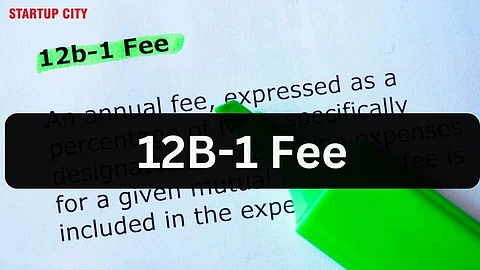

Investing in mutual funds presents an appealing opportunity for wealth accumulation. However, navigating the landscape can be complex, especially when it comes to understanding the various associated fees.
Among these fees, the 12b-1 fee stands out as a significant component that deserves closer examination. In this comprehensive guide, we will delve into the intricacies of 12b-1 fees, seeking to understand their nature, purpose, and implications for investors.
A 12b-1 fee is essentially an annual charge imposed on mutual funds, primarily earmarked for marketing and distribution purposes. This fee, enshrined within the Investment Company Act of 1940, is categorised as an operational expense and is factored into a fund's expense ratio.
Typically falling between 0.25% and 0.75% of a fund's net assets, with 0.75% representing the maximum allowable threshold, the 12b-1 fee was originally intended to foster fund growth, potentially leading to reduced management expenses through economies of scale. However, the effectiveness of this premise has faced scrutiny over time.
Upon closer inspection, it becomes apparent that the 12b-1 fee consists of two separate components: the distribution and marketing fee, and the service fee. Together, these components cannot exceed an annual limit of 1%. The distribution and marketing fees are restricted to 0.75%, while the service fee can rise to 0.25%.
The implementation of 12b-1 fees varies across different categories of mutual fund shares. Class B and Class C shares, typically distributed through brokers, commonly include 12b-1 fees. However, these fees may also be present in no-load mutual fund shares and Class A broker-sold shares.
Class A shares usually involve a front-end load fee, although sometimes with a reduced 12b-1 fee. In contrast, Class B shares typically waive a front-end load but may impose a back-end load alongside a 12b-1 fee. Notably, Class C shares often encompass the maximum 1% 12b-1 fee.
The main objective of 12b-1 fees is to finance distribution expenses, encompassing marketing costs and compensations to brokers involved in selling fund shares. Moreover, these fees contribute to promoting the fund and disseminating relevant materials to clients.
Another aspect addressed by 12b-1 fees is shareholder services, such as hiring personnel to manage investor inquiries and distribute information as necessary. It's noteworthy that certain fees, like shareholder service fees, may be obligatory even in the absence of a 12b-1 plan.
Additionally, a portion of these fees may be earmarked to cover other expenditures, including legal, accounting, and administrative services, as well as fees associated with transfer agents and custodial services.
Although 12b-1 fees were originally designed to assist investors by fostering fund growth, doubts have arisen regarding their effectiveness in achieving this objective. It's crucial for investors to be mindful of these fees and comprehend their influence on their investments.
Armed with this knowledge, investors can make more informed decisions about where to allocate their funds and ensure they're not overpaying in fees.